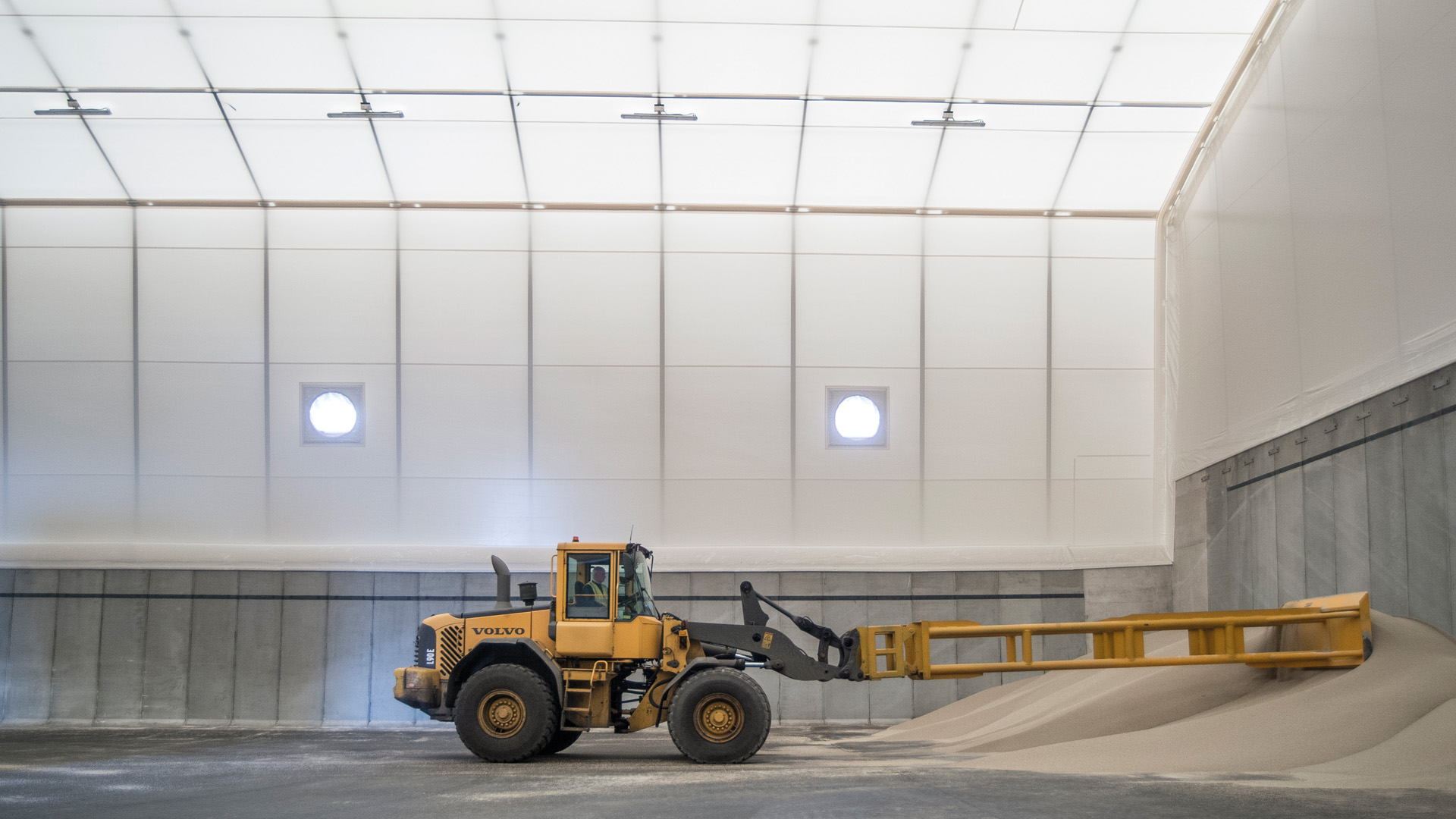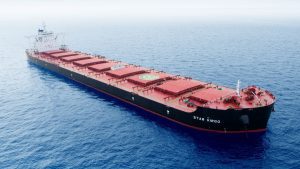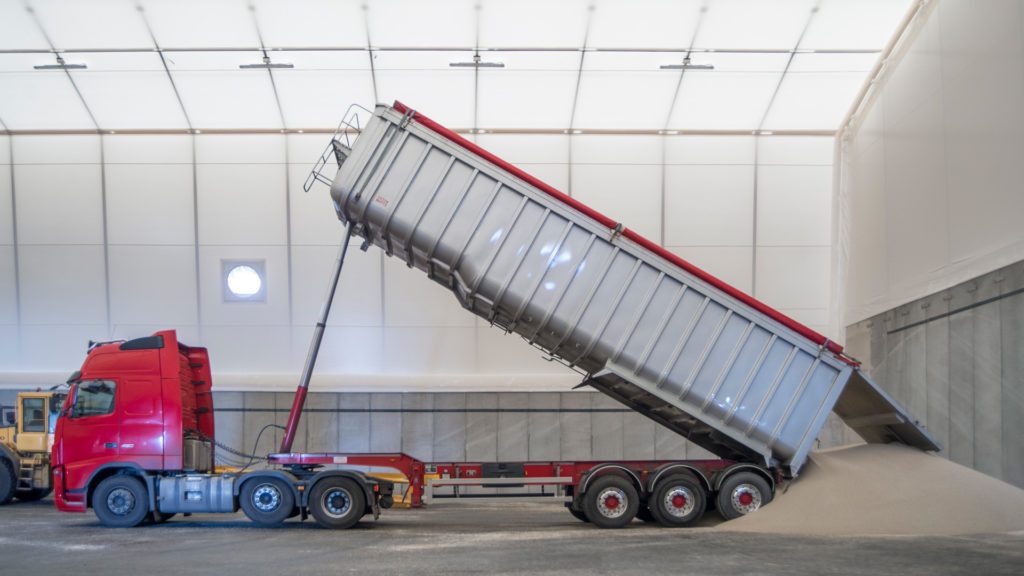Dry Bulk Commodities: A Comprehensive Guide

What Are Bulk Commodities?
Bulk commodities refer to raw materials transported in large quantities, typically in loose, unpackaged forms. These commodities are essential to global trade and industry, forming the backbone of sectors like energy, agriculture, and manufacturing. Bulk commodities can be classified into two primary categories:
- Dry Bulk Commodities: Solid materials like grain, coal, and iron ore, typically transported in bulk carriers or stored in silos.
- Liquid Bulk Commodities: Liquids like crude oil, chemicals, and liquefied natural gas (LNG) transported in specialised tankers.
For this guide, we’re going to concentrate on ‘dry bulk commodities’, as here at Collinson Tensile, we’re specialists with over 20 years of experience in creating high-performance tensile fabric buildings for ports and harbours. With that in mind, we’re in a great position to use that expertise to explain everything there’s to know about dry bulk commodities & their storage.
What is a Dry Bulk Commodity?
Dry bulk commodities refer to raw materials transported in large, unpackaged quantities. Typically, these materials are solid, granular, or particulate, shipped in loose form without containers. They are essential inputs in global industries, particularly in manufacturing and production. Key characteristics include their shipment in vast quantities, measurement in tons of deadweight (DWT), and bulk storage requirements that allow for efficient handling and transportation.
Types of Dry Bulk Commodities
Dry bulk commodities are categorised mainly into “major bulks” and “minor bulks.” Major bulks consist of commodities like:
- Iron ore
- Coal
- Grain
Major bulks constitute nearly two-thirds of the global dry bulk trade. Minor bulks include products like:
- Cement
- Fertilisers
- Steel
These minor bulks account for the remaining portion of the trade. The classification helps prioritise logistics and vessel requirements, as these materials demand specialised storage and transport solutions.
Examples of Bulk Goods
Examples of bulk goods include essential commodities such as:
Dry Bulk Goods
- Grains (e.g., wheat, corn, and rice): Are used widely in the food industry.
- Iron ore: This is a critical input for steel manufacturing.
- Coal: This is essential for energy production and steelmaking.
- Sand and gravel: Foundational materials in construction.
- Bauxite: Used primarily in aluminium production.
- Fertilisers: Vital for agricultural productivity.
Liquid Bulk Goods
- Crude Oil: A primary energy resource transported globally for refining into fuels and petrochemical products.
- Liquefied Natural Gas (LNG): A compressed form of natural gas used for heating, electricity generation, and as a cleaner alternative fuel.
- Petroleum Products: Refined liquids such as gasoline, diesel, and jet fuel, essential for transportation and energy needs.
- Chemicals: Bulk liquids like methanol, sulfuric acid, and caustic soda are used in industrial and manufacturing processes.
- Biofuels: Renewable fuels like ethanol and biodiesel shipped in bulk for blending with traditional fuels to reduce emissions.
These materials vary in physical characteristics but share a commonality in requiring bulk handling methods due to their loose, granular, or liquid nature.
The Role of Dry Bulk Commodities in Global Trade
Dry bulk commodities account for a significant portion of global trade due to their use in foundational industries. The Baltic Dry Index (BDI) serves as a critical barometer for shipping costs and demand for these materials. This index is closely monitored by industry stakeholders for insights into global economic trends.
How Are Dry Bulk Commodities Transported?

Source: https://www.rivieramm.com/news-content-hub/news-content-hub/greek-owners-take-cautious-approach-in-dry-bulk-market-amid-pricing-correction-82513
Transporting dry bulk materials requires specialised bulk carriers ranging from Handymax vessels for smaller loads to Capesize carriers for massive shipments. These vessels ensure efficient global transport while adhering to environmental regulations to prevent spillage and contamination.
In the UK, dry bulk shipping primarily involves importing coal, grain, and iron ore to support energy production, food supply, and steel manufacturing. Ports are equipped with advanced unloading and storage facilities for these commodities.
Main Dry Bulk Trades in UK Shipping
The UK is actively involved in the dry bulk trade, primarily handling imports of coal, iron ore, and grains. The demand for these commodities supports multiple industries, from energy to food production. Ports in the UK accommodate large bulk carriers and have specialised port warehouse storage facilities for efficiently unloading and storing these materials. Coal, often imported for energy production, and iron ore for steel production are particularly significant in supporting the UK’s industrial needs.
Changes to Dry Bulk Shipping in the UK
In 2020, the UK experienced significant shifts in dry bulk shipping, reflecting broader trends in energy production and industrial demand. According to the UK Port Freight Statistics: 2020 report by the Department for Transport, The volume of coal handled at UK ports fell to an all-time low of 7.6 million tonnes, continuing its decline as the UK progresses toward phasing out coal-fired power plants by 2025. This reduction is aligned with the closures of coal-fired facilities and reduced coal consumption by electricity generators, as highlighted in the UK’s energy transition efforts.
Conversely, biomass imports have grown as an alternative energy source. Approximately 19.1 million tonnes of biomass were imported in 2020, with major contributors being the United States, which accounted for 33% of these imports. Ports such as Tees & Hartlepool and Grimsby & Immingham collectively handled 62% of non-EU biomass imports, underscoring their role in supporting the UK’s renewable energy agenda.
These trends demonstrate a shift from traditional energy resources like coal to more sustainable options such as biomass, significantly influencing the cargo composition of dry bulk shipping in the UK.
Storing Dry Bulk Materials: Why Tensile Structures?

Efficient storage is essential to maintaining the quality and usability of dry bulk commodities. Tensile structures provide a versatile, durable, and cost-effective solution for storage in ports and industrial settings. Here’s how tensile structures address the unique storage requirements of dry bulk commodities.
See also: Yara UK Limited storage facility project
Versatile and Spacious Design
Tensile warehouses can span up to 100 meters in width without internal columns, offering unobstructed space for large quantities of materials. This clear-span design is especially beneficial for ports and industrial facilities where bulk commodities need to be stored in vast open areas, accommodating equipment and facilitating efficient movement within the storage area.
Also see: Tensile Fabric Structures: The Ultimate Guide
Durable and Weather-Resistant
Constructed with robust steel frameworks and high-performance membranes, tensile structures are designed to withstand extreme weather conditions. This is crucial for materials like grains, sand, and coal, which are sensitive to moisture and temperature fluctuations. The durable membrane also provides UV protection, reducing the risk of material degradation due to sunlight exposure.
Enhanced Environmental Protection
Tensile structures are ideal for preventing contamination and environmental hazards associated with dry bulk commodities. By offering fully enclosed storage, they minimise exposure to wind, rain, and environmental pollutants. Additionally, specialised membranes can include coatings or additives that resist corrosion from salt air in coastal port areas, ensuring a longer lifespan for both the structure and stored materials.
Cost-effective and Rapid Installation
Compared to traditional warehouses, tensile structures can be installed quickly and with minimal disruption, making them an efficient choice for high-traffic port environments. Prefabricated components mean that installation time is minimised, enabling facilities to start storing and handling materials sooner.
Energy Efficiency
The translucent membranes used in tensile structures allow natural daylight to enter, reducing the need for artificial lighting. This not only lowers operational costs but also provides a sustainable advantage, an increasingly important factor in modern industrial operations. The ability to reduce electricity usage is beneficial for ports and warehouses managing high volumes of bulk goods over extended periods.
Low Maintenance Requirements
Tensile structures require minimal maintenance, even in demanding environments like ports. The durable, corrosion-resistant membrane and robust steel frame provide long-term resilience, making them a low-maintenance solution for bulk storage. This translates to lower lifecycle costs and less downtime, allowing for continuous, uninterrupted storage operations.
In summary, tensile structures offer a versatile, durable, and efficient solution for dry bulk storage, meeting the unique needs of port and industrial settings. Their ability to provide vast, protected spaces with reduced maintenance and operational costs makes them an optimal choice for managing large volumes of dry bulk commodities securely and efficiently.
Use Case: Ports and Industrial Facilities
Tensile structures are particularly effective in high-traffic port environments, providing rapid, secure solutions for bulk material storage. Their adaptability and resilience make them a preferred choice for industries managing large volumes of raw materials.
Conclusion
Dry bulk commodities are integral to global trade, forming the backbone of numerous industries. Effective transportation and storage solutions like tensile structures ensure the efficient handling of these materials, supporting sustainable industrial growth. By understanding the dynamics of dry bulk commodities, businesses can better navigate their logistics and operational challenges.
